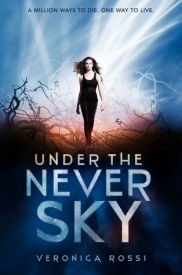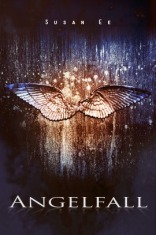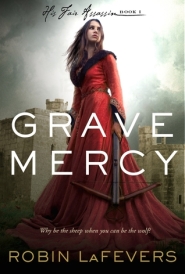4/5 stars
Quotes:
(1) “The darkest minds tend to hide behind the most unlikely faces.”
(2) “You okay, buddy?” Liam asked. “Need to stop and smell the scholasticism?”
For Readers Who Like:
(1) “hidden powers” fiction
(2) The Shatter Me series, The Mindjack series, and Howarth’s The Institute
(3) social and political dystopias
Review:
I don’t know why I have been so adverse to the “hidden powers” theme lately. It seems to be so prominent in YA that I have grown kind of bored with it.
Here’s the run-down of this theme: Kid(s) develop terrifying and dangerous abilities. Society freaks out. “How did this happen? Secret scientific/government experimentation? Evolution? Too much consumption of the orange powder on Cheetos?” Whether we know or not isn’t really the point. It leads to a social and political environment of fascism, fear, and scapegoating. (Most of the books in this genre follow this formula, so you can see why it can get kind of repetitious.)
In this genre, there are two series that I think stand out. The Shatter Me series is notable for its style, but I think its female character is too passive for me to really recommend the book without caveat. The Darkest Minds is written in a style that is neither good nor bad but just forgettable. The novel’s characterization, however, is its strength and is what keeps it from being mediocre.
First, I can’t convey how much I respect Bracken for not focusing on appearances. What do we know about our main character? She has brown hair and it is mentioned maybe twice that Ruby is supposed to be pretty. This runs counter to the trend in YA of waxing poetically on the beauty of our fair heroine. AUTHOR: “How about I slip in another scene with the character just casually looking into the mirror so she can describe (once again) her plump lips and sparkling eyes. Hm, maybe I have these boys tell her how pretty she is and she can narrate about the way her honey-blonde locks shimmer in the moonlight.” Yes, because the story hinges on the detail of our heroine’s shimmering, moonlit hair. Unless there is a point in the plot when she and her friends get trapped in a dark, dank cellar, and they can miraculously navigate a way out using only her incandescently shining head, I’m not interested.
Second, Ruby is believable. Bracken avoids writing her as one of the two female extremes of characterization: the passive victim (more like Bella Swan) or the self-sufficient heroine (more like Katniss Everdeen). Ruby could have easily been written as a girl traumatized into inaction by her experiences in the government camp. Just as likely, she could have been written as a badass teenage weapons expert out for blood and revenge. Ruby is neither of these, but alternates between the poles of self-doubt and blindingly clear determination. Because of this, she is a more richly conflicted character.
Verdict:
This is one of the better series in the “hidden powers” genre. The main character is interesting and nuanced, although the writing is mediocre. Fans of social and political dystopias will enjoy this novel.








